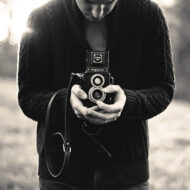Drawing Basics
Putting the Elements Into Practice
So what are the drawing basics? Now that we’ve discussed all of the basic elements of art, let’s start getting into how they apply. We won’t be looking into all of them right away. Color, for example, won’t apply to what we’re doing right now, so we’ll put it off for the time being.
We talked about how artists see and this will have a very big role in what we’re doing. In that post, I mentioned how artists can break down complex objects by identifying the basic shapes within them. These drawing basics are extremely important and should not be brushed off as silly or too basic. If you can’t get this down, you will always struggle with drawing.
Practice Is Not a Dirty Word!
So let’s come back around to that and start applying this skill to our drawings. The better you get at it, the easier drawing will come to you. In another post, How to Fast Track to Better Drawings, I mentioned practicing every day. The P word has a tendency to turn people off right away. But let’s be real here. DO you want to learn how to draw or don’t you? I’m not implying that you need to do a masterpiece every day. Just take one small step. Even a 5-10 minute sketch will sharpen your skills.
Maybe now might be the perfect time to put this into practice. Find a sketchbook and make the commitment to do at least one sketch, one step towards your goal, each and every day. Plus, if you start now, you’ll have a clear record of improvement. Trust me…stick with it and you WILL improve!
Now, Let’s Get Started!
All you’ll need for now is your sketchbook and something to draw with. Naturally, most people (including myself) reach for a pencil. But there’s something to be said for working with a ballpoint pen. It’s permanent. You can’t erase. And that’s fine! It forces you to detach a little from the mistakes. And you will make them! Lots of them. Mistakes are inevitable and are, in fact, essential for learning. Using a pen forces the detachment from mistakes and prevents obsessing over constant erasing and attempts to get it right. Whatever you choose to draw with, remember to start off lightly. You can call them practice lines or ghost lines. It doesn’t really matter. Just start off lightly and you can add darker (more committed) lines later, once you’ve plotted your sketch out.
My first suggestion is, if you haven’t already done so, review the How Artists See post and check out the FREE Skillshare video lesson, How to Draw: The Very Basics.
Secondly, make it a point of taking your sketchbook with you wherever you go. Everybody has 5-15 minutes every day to get a quick sketch in. You can draw on your lunch break, while you’re waiting in a long line, waiting in a doctor’s office, etc. Look around you and find something to draw. I’m not talking about highly detailed drawings here. I mean sketching out the basic shapes of each object. You’re not worrying about the details, just the basic shapes. Draw lightly and loosely. Fill each page with several sketches and don’t worry about any mistakes. You can make several sketches of the same object, perhaps making corrections you noticed during the first sketch. Or, you can fill each page with several different items. Putting these drawing basics into daily practice will put you on the fastest track possible to drawing with skill.
Relax Your Grip
And lastly, draw loosely. Holding your pen or pencil with a death grip won’t help you. In fact, death grips usually show themselves by way of poor drawings. Now there are different schools of thought on how to hold your pencil properly. For now, I will say to go with how you normally hold a pencil, but higher up (3-4” from the tip). Also, include your whole arm when you draw. In other words, don’t just move your hand by moving your wrist around. You have a much greater range of motion and fluidity when using your whole arm. Granted, if you’re working on a small sketch, you’ll be using less arm and more wrist. But my point is to be as loose as you can. Your drawings will thank you!
So for this first go, practice what you learned from the How Artists See post and the How to Draw: The Very Basics video in regards to identifying basic shapes. For now, don’t concern yourself with any details. Just see if you can identify the basic shapes of each object. Try to do at least one or two each day and let’s see whether or not we can get your eyes accustomed to seeing like an artist.
This blog contains Amazon Affiliate links. As an Amazon Associate, I may earn from qualifying purchases.





Recent Comments